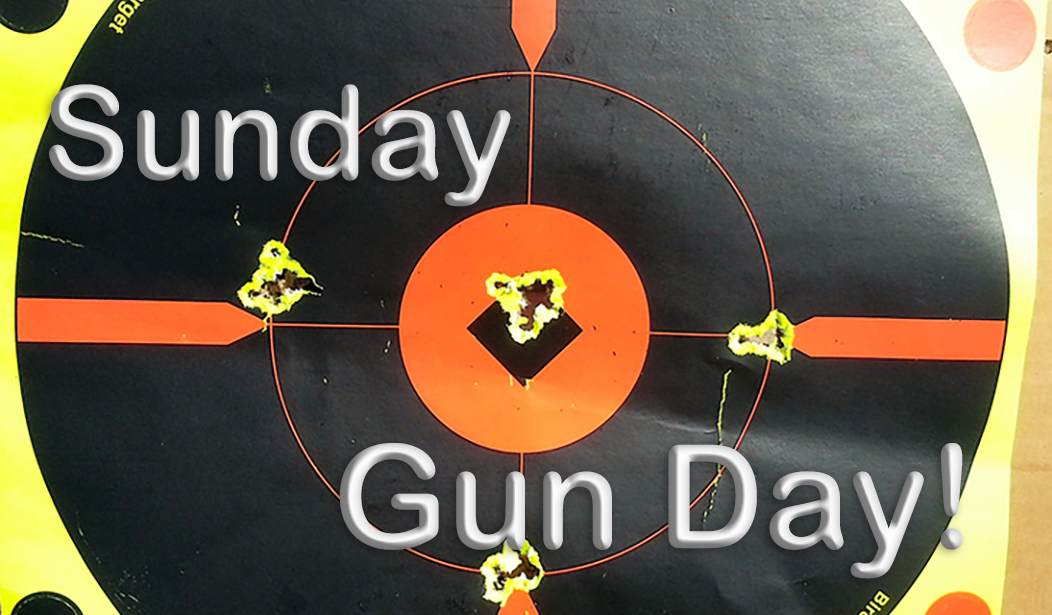The Luger… Rifle?
We’re all familiar with the P08 Luger pistol. It’s one of the most graceful handguns ever made; the grip angle is perfect, it’s a beautiful piece to behold, and when you raise it to eye line, your eye naturally lines up with the sights – such as they are, and they aren’t much. The front sight is a simple blade, and the rear is just a notch cut in a ridge on the back of the toggle. I have one, a 1938 Oberndorf-made one, still with the WW2-era German proofmarks, and I wouldn’t want to depend on it in battle. It’s all original, all number match, even the magazine, and it still stovepipes at least once in every eight-round mag.
Like a lot of late 19th-century German engineering, the Luger has a gazillion screwy little parts that have to be carefully fitted to make it work – and even then, in my experience at least, it doesn’t work very well. I keep it, though, because it’s beautiful.
Here’s what you might not know: The designer of the Luger pistol, Georg Luger, patented and built a rifle based on his toggle-action – and a full-power, semi-auto main battle rifle at that. No, this was a full-size rifle, not the long-barreled pistol version with the detachable stock. And it may well, today, be the rarest rifle model known – with as few, possibly, as one surviving, if that.
Yes, There Was One
Unfortunately, the Luger rifle never went beyond the prototype stage. From the patent drawing, from the few photos of what may well be the only surviving prototype, serial #4, and from experience with Luger pistols, it seems very likely that the Luger rifle was an expensive proposition that required a lot of skilled labor to produce. Note that in the late ‘30s, the Luger was replaced in the German military with the Walther P-38, a solid, reliable arm that was easier to manufacture than the Luger. The same problems, it seems likely, would have applied to the rifle.
If it had worked, though, the German army may well have entered the Great War not with the GEW 98, a bolt gun like the service rifles of all the opposing powers, but a five-shot semi-auto. How big an advantage, do you suppose, would that have given the Kaiser’s men? The Great War was a more close-run thing than the second war. Germany had troops in France and Belgium when the armistice came, and there were no Allied troops in Germany. Russia, then becoming the Soviet Union, had walked away. Would a fast-firing service rifle have made any difference? It’s hard to say – especially since we know so little of the beast.
See Also: Sunday Gun Day XLV - The Greatest Battle Implement Ever Devised, the M1 Garand
The Guns
A quick look at the gun and the patent drawing reveals its lineage very plainly. It has a similar toggle action, with the characteristic elbow-toggle rather than a slide or an internal bolt inside the receiver. It seems an awkward design for a main battle rifle firing a full-length, full-power cartridge. The compact 9x19mm and .30 Luger cartridges in the pistol work all right, but the long 7.9x57mm rifle cartridge would require a long action and a toggle that, when firing, would rise up quite a ways in front of the shooter’s firing eye, which could be distracting.
But it’s unlikely, if not impossible, that any of us will ever get the chance to try it for ourselves. Only prototypes were made, and it’s not at all clear how many prototypes were made. There are rumors of one specimen that was in the private museum of the late Interarms corporation, but there really isn’t reliable information. I haven’t been able to ascertain whether that gun really existed or where it may be now.
Information on this rifle is scarce, but one internet sleuth uncovered what appears to be a sale listing, with an estimated price (an auction?) of 150,000 to 200,000 – what currency this is in isn’t mentioned. The description of this piece, again the noted serial #4, reads:
“Unique German Experimental System Luger Self-Loading Military Rifle. Serial no. 4, 7.92mm. 27 ½ inch barrel. Blued Luger toggle action marked on the left side System Luger. Tang—mounted with safety. Five-shot magazine. Plain oil-finished walnut stick with applied pistol grip and very similar in form to the GEW 98 stock. Stock and handguard secured by two blued bands, the central one hinged and fitted with a sling swivel. Stock serial numbered 4 behind rear sight and on wrist.
Weight: 9 lbs 11 oz.
Condition: Excellent, Retaining virtually all the bright blue finish. Stock with scattered light dents and bruises.
Note: George (sic) Luger, well known for his modification of the Borchardt pistol, was apparently working in secret on a self-loading military rifle but it was never produced in quantity. His patent No. 4126 of 1906 applies specifically to this rifle.
Interestingly, the patent is registered not in Germany but in Britain.
— Ward Clark (@TheGreatLander) April 5, 2025
Still, suppose the Luger rifle had the same reliability as the Luger pistol. In that case, it’s probably just as well that the German army didn’t try to outfit their troops with these, as opposed to the reliable and bank-vault-tough Gewehr 98 bolt rifle.
What Happened?
Not much, as it turns out. The German military stuck with bolt guns until after World War 2, when the Wehrmacht was unfortunate enough to run up against the United States Army and that rifle that George Patton called the greatest battle implement ever designed, the M1 Garand. The Luger rifle never blew up many skirts in military markets, and it’s unclear if it was ever proposed as a commercial rifle, although Mauser certainly proved that a German gun company could hold appeal in both markets.
In an interesting side note, John Browning’s first two prototypes for a semi-auto shotgun were based on Hugo Borchardt's toggle action, which later went into the Luger. The Maestro, however, was worried about patent infringement, so he went in a different direction with later prototypes. The result of that, of course, is the famous Auto-5.
See Also: Sunday Gun Day Vol. II Ep. XXV - How One Mormon Gunsmith Changed the World
The Browning toggle-action prototypes still exist, and you can see them in the Browning Museum in Ogden, Utah. And if you’re ever in Ogden, do visit the Browning Museum. I can’t recommend it enough.
The late 19th century saw quite an explosion in gun development, not least of which was in semi-auto rifles. Many designs still in use today originated in the late 19th and early 20th centuries. It would have been a fascinating time to be involved in the shooting sports, with people like John Browning, Harry Pope, Paul Mauser, and Georg Luger still working. And maybe – if you were very lucky, in the right place at the right time – you may even have seen one of those rarest of all rifles, the Luger.














